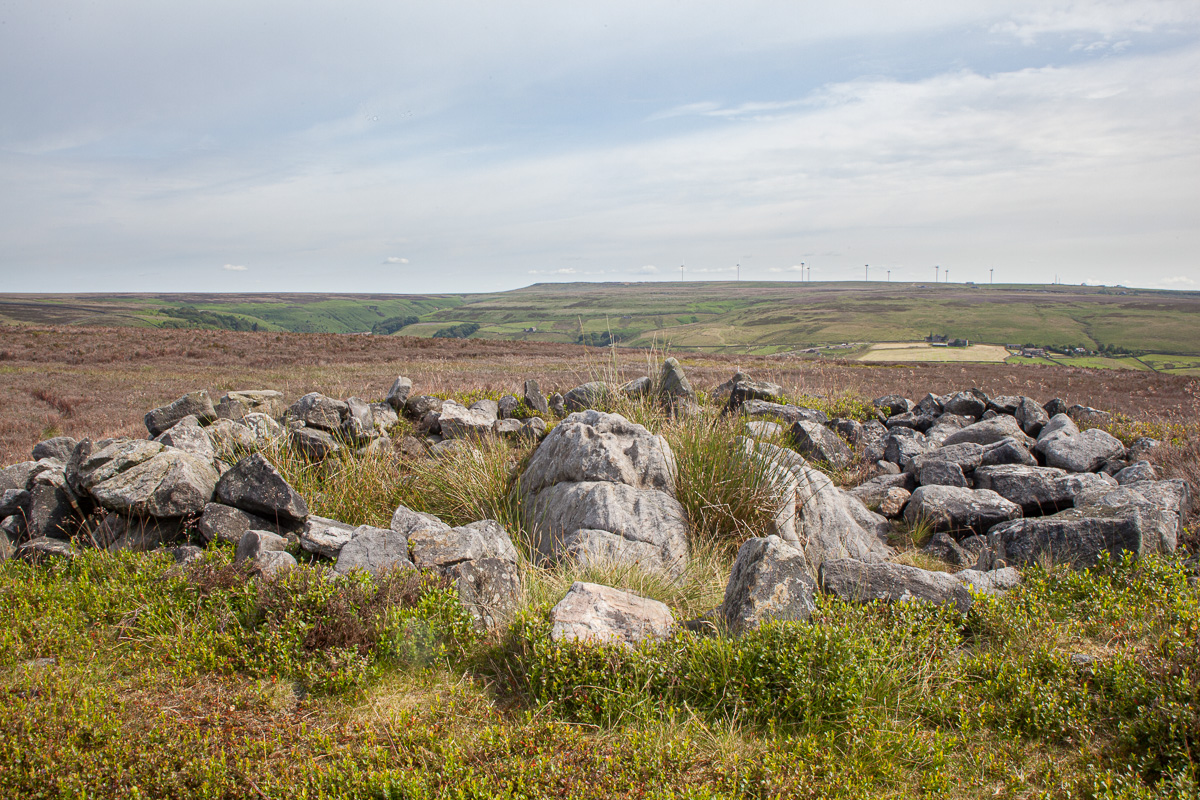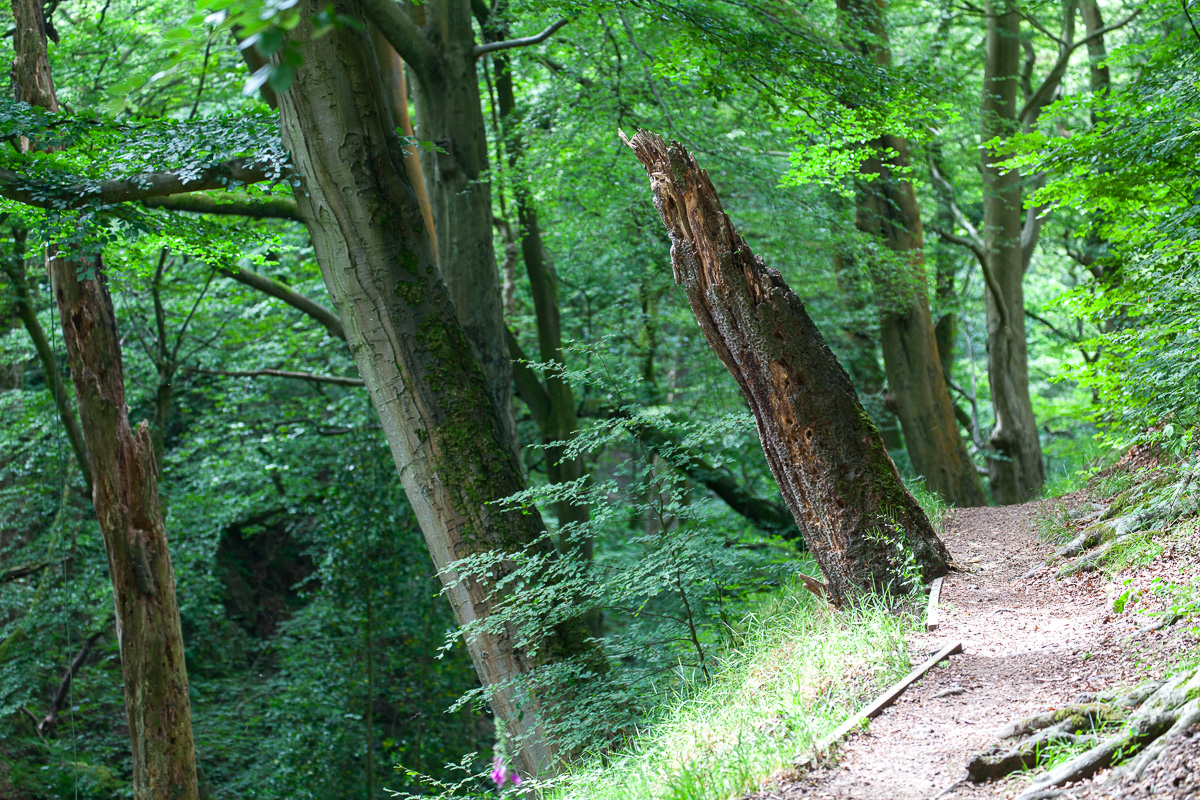It’s was such a pleasant morning, it would have seemed rude not to head up on to the Moor. So pleasant, in fact, that, once I was up there, I decided to take a detour via Churn Milk Joan, Miller’s Grave, Robin Hood’s Penny Stone, and the Greenwood Stone. (I describe making the same detour in a chapter of On the Moor.)
Churn Milk Joan is a famous local landmark: a standing stone erected to mark the boundary between the parishes of Wadsworth and Midgley. Evidently, Joan was also significant in a previous life, as she bears four prehistoric cup marks, carved by our Bronze Age or late Neolithic predecessors for purposes unknown. The Greenwood Stone also marks the parish boundary, but the only carving on that stone is considerably younger, marking the year of its erection (1775, if I read it correctly, although I’ve never been confident of the final digit, which might also be read as a 4).
Like Churn Milk Joan, as its name implies, Robin Hood’s Penny Stone, a large boulder in the middle of nowhere, is a place where locals traditionally left pennies. The tradition continues to this day, although I stupidly left all my cash at home. A short distance from Robin Hood’s Penny Stone lies Miller’s Grave, a Bronze Age burial cairn.

As on the previous occasion I was on the Moor, unusually, I didn’t see a single red grouse, although I did hear one calling go back! from somewhere in the heather. I was also disappointed, once again, not to see any of my beloved wheatears or lapwings. But I did get a few nice shots of meadow pipits, and saw a kestrel being chased off by a rook.
✽
On an errand in the afternoon, I walked down into Hebden Bridge via Nutclough Wood. Butterflies were out in profusion along the bridleway. Not just the usual crowd, either. I spotted and photographed what I later worked out to be a ringlet and a large skipper (being confident of the former, but not of the latter).
There were loads of unripe hazelnuts on the lower branches as I passed through the wood. Presumably, hazelnuts gave Nutclough Wood the first syllable of its name; the clough being the narrow ravine in which the wood is situated.

Leave a Reply